Boy oh boy, hasn't this felt like a long time coming? When Hyundai first unleashed the i30 N on the world, back in 2017, it was a manual-only proposition, but even way back then they were promising that an automatic option was coming.
It might have taken three years, but the long-awaited eight-speed dual-clutch automatic has at last arrived - at least in prototype form - ahead of the vehicle's official launch next year.

And it's not just the gearbox that's changed, with more power from the 2.0-litre engine, a faster sprint to 100km/h, and an option to strip weight from the cabin.
All of which sounds pretty good, right? The only question now is, was the auto worth the wait?
Hyundai I30 2021: N Performance
| Engine Type | Turbo 4, 2.0L |
|---|---|
| Fuel Type | Premium Unleaded Petrol |
| Fuel Efficiency | 8.0L/100km (combined) |
| Seating | 5 |
| Price From | $31,900 - $38,390 |
Does it represent good value for the price? What features does it come with?
7 / 10
There’s a fair bit of uncertainty here, I’m afraid. Hyundai is yet to confirm the pricing for this updated i30 N range, but we are expecting to see the prices climb, if only slightly.
And that’s compared to the current, manual-equipped cars, obviously, which will set you back some $41,400 or $42,910, depending the body shape. Cars equipped with the eight-speed dual-clutch automatic will carry a more sizeable, but yet to be confirmed, price jump.
So what are you buying? We’re going to skip over the performance kit here (we’ll come back to that under the Engines and Transmissions sub heading) and instead take a closer look at the feature list.
Outside, you’ll find new LED headlights, V-shaped DRLs, and 19-inch alloys wrapped in Pirelli rubber, as well as a dual-exhaust that’s every bit as loud, if not louder, than in the i30 N we already know and love.
Inside, you’ll also find a leather-wrapped steering wheel and shifter, keyless entry with push-button start, dual-zone climate control and a 4.2-inch digital driver screen. But the big news in the cabin is the addition of a 10.25-inch touchscreen with Apple CarPlay and Android Auto, replacing the 8.0-inch screen.
Is there anything interesting about its design?
8 / 10
The cars we drove were draped in camouflage, but we have seen images of the 2021 model doing the rounds internationally, and so we know that we're talking a design evolution, not a revolution.
There’s a new and wider grille, for example, which is designed to ape a plane’s wing, as well as new-look LED headlights and V-shaped DRLs, while at the rear, there’s a updated look for the hatch, while the Fastback is as per program.

Short answer? It looks like the burbling, bristling hot hatch it always did - complete with towering 19-inch alloys and swollen arches - and that’s no bad thing.
Inside, the new and massive screen takes pride of place in the dash, and though we didn’t use it in the pre-production cars we tested, it’s safe to assume it will make Apple CarPlay and Android Auto smartphone mirroring an easier and clearer task.
How practical is the space inside?
8 / 10
It's no less practical - in real terms - than the regular i30 range, which is one of the massive bonuses of opting for the hotted-up hatch over a dedicated sports car.
Again, Hyundai is yet to confirm the full details for our market, but with its exterior dimensions largely unchanged (stretching 4335mm in length, 1795mm in width and 1447mm in height in the hatch, and 4455mm in length, 1795mm in width and 1419mm in height in the Fastback), we largely know exactly what to expect.

Those dimensions translate, in the hatch, to 381L of luggage space with the rear seats in place, swelling to 1287L with them folded flat, while the Fastback lifts those numbers to 436L and 1337L respectively.
There are cupholders for both front and backseat riders, and bottle holders in each of the doors, as well as coat hooks and map pockets for the rear occupants.
Up front, you’ll find a two 12-volt power outlets and USB for your charging needs, with the end game being that the N range offers enough practicality and convenience perks to cement its role as an easy daily driver when you’re away from the track or a twisting road.
What are the key stats for the engine and transmission?
9 / 10
The big news, of course, is the new eight-speed dual-clutch automatic, but the truth is I can't tell you all that much about it. See, our time in these pre-prod cars was limited to on-track laps, usually with the vehicle set to its angriest settings, so I'm hesitant to sing its praises at regular speeds on regular roads without spending a little more time with it.
Where I can sing them, however, is at noise, where you can tell the gearbox has been setup for fun above all else. It will grip and hold gears in its full auto settings, and you can force a shift up and down via the paddles even in extreme circumstances, with the end result being an auto that feels fast and perfectly fitting on a race track or twisting road.

Hyundai is also talking up a new "N Grin Shift" function which, at the push of a button, unlocks maximum power for a period of 20 seconds, though the function wasn't active on our prototype test cars.
That gearbox pairs with an updated engine, with the i30 N with power now boosted boosted from 202kW to 206kW, and maximum torque lifted from 353Nm to 392Nm. That also means a drop in the sprint to 100km/h, which is now 5.9 seconds.
How much fuel does it consume?
7 / 10
Too soon to say, I'm afraid. Hyundai is yet to release the full specification detail, and it would be massively unfair to take a computer reading after a track session.
For reference, the existing manual model drinks 8.0L/100km on the combined cycle, while emitting 186g/km of CO2.
The i30N is fitted with a 50-litre fuel tank that sips 95RON fuel.
What's it like to drive?
9 / 10
Now to say this is an important car for Hyundai is an absolute understatement.
Remember, in the world of hot hatches, fewer than 10 per cent of shoppers opt for a manual gearbox, with the vast majority preferring the easier option of an automatic gearbox. The fact that Hyundai has sold around 3500 examples of the N to date is a credit to them, but they now think sales could double - or more - with the introduction of the automatic.
There’s more good news than simply sales, though. In our limited time behind the wheel, we found the automatic near-perfectly set-up for fun, with the gearbox willing to stubbornly cling to a lower gear when you need the extra grunt, and willing to force a shift up or down if the driver commands it. Not all auto gearboxes can claim the same.

Somewhat predictably, the automatic will end up being - at least in my hands - faster around a race circuit than the manual model, with the quick-thinking dual-clutch able to grab and hang onto gears much faster than I can select them myself. Wakefield Park Raceway is essentially a third-gear circuit in the manual version, but in the automatic, you can grab second for a blink of an eye on particular corners, squeezing that tiny bit of extra grunt without costing yourself time on a human gear shift.
So faster yes, but in my opinion, no less fun, with the i30 N feeling every bit as unhinged as the manual car, despite taking care of the gear changes for you.
The steering, especially in its N Mode, is meaty and direct, but the biggest perk of N ownership is that it makes you feel a better driver than you actually are, with the traction settings allowing for a little heroic sliding, safe in the knowledge that, should you push the boundaries a little far, it will drag you back into line.
All hot hatches straddle the line between Jekyll and Hyde, but the i30 N is definitely more the latter, and it’s an absolute ton of fun as a result.
Warranty & Safety Rating
What safety equipment is fitted? What safety rating?
8 / 10
There's no shortage of safety systems on offer here, with Hyundai promising the usual suite of airbags (seven in total - dual front, front-side, curtain bags, plus a driver's knee bag) and braking and traction aids will be again accompanied by some high-tech kit.
Think Forward Collision Assist and AEB with pedestrian detection, Lane Keeping Assist, Lane Following Assist, Blind Spot Warning and Rear Cross-Traffic Alert.
The Hyundai i30 range wears a five-star ANCAP safety rating.

What does it cost to own? What warranty is offered?
8 / 10
Hyundai vehicles are covered by a five-year, unlimited-kilometre warranty, with the brand also selling pre-paid service packs that cover the duration. The i30 N, for example, will set you back $1595 for the first five years of servicing or 50,000kms.
Verdict
It might have been a long time coming, but on first impressions, the automatic gearbox was worth the wait. Faster, and just as fun, on a track, but should also prove a lot easier to live with in the day-to-day stuff, too.
Pricing Guides








.jpg)







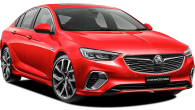




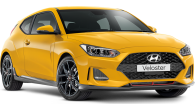





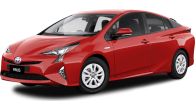


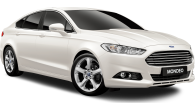





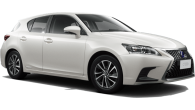


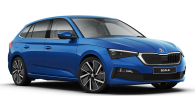
.jpg)
.jpg)




